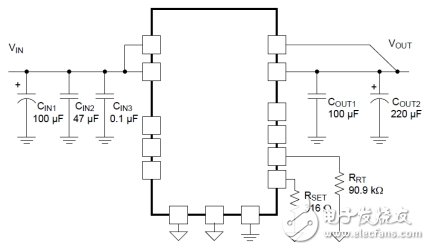I believe that most people click "Agree" when they have not read the "Terms and Conditions". That being the case, why spend so much time reading the cumbersome provisions? As with any important document, the data sheet also has provisions - a 1-page specification and a 20-page specification. This is especially true for power modules, as integration masks key details about the device. I will discuss it in two blog posts in a blog post, based on several common obstacles in the evaluation of power modules based on the data sheet home page.
It is challenging to evaluate the integration of modules. The most basic power module is just a small component with a converter and inductor inside. It basically replaces some of the board design that power engineers must invest in time and effort. However, not all modules are identical: the use of a power module does not mean that no external components are required (in some cases, as shown in Figure 1, many external components are required).

Figure 1: Input and output capacitors increase the complexity of the module circuit
The biggest difference between modules is related to whether the input and output capacitors are integrated, or whether they must be added externally. Even in modules with integrated capacitors, it is important to delve further into the data sheet to determine the amount of capacitance inside the module. In some cases, the output capacitors contained in the module are like a "ring" spare tire: they are not designed to work full-time in terms of technical function. A good way to identify if more capacitors are needed is to look at the performance curves in the datasheet: If the manufacturer fails to achieve these results without adding external capacitors in the circuit, you will most likely not get any results. Modules like TI's TPSM84A22 are a good choice, because even the specifications on the front page are obtained without the use of external components.
External components also play an important role in the size of the power module solution. Module manufacturers want to sell "minimum size" or "smalest form factor" parts, but need to make this meaningful. For example, a module with 9mm & TImes; 15mm size is much less noisy than a module with 10mm & TImes; 10mm size, but once the necessary capacitance is added to the 10mm & TImes; 10mm module, it may be found that it needs more space on the board. . This principle is shown in Figure 2. For this reason, it is also important to consider factors other than the module package size to determine which component is best for the system.

Figure 2: Module solution size and module package size can be quite different
In the second part, we will discuss evaluating module efficiency and transient response. Also, read more about power modules and learn more about TI power module products.
Ture Wireless Earbuds,True Wireless Earphones,Bluetooth Wireless Earbuds,Ture Wireless Earplugs
TOPWAY EM ENTERPRISE LIMITED , https://www.topwayemltd.com